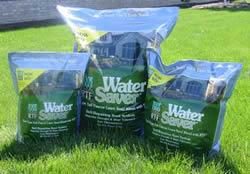|
|
|
|||||
|
|
||||||
|
||||||||||
|
Fast Growing Trees Fastest
Deciduous |
|
Faster
Deciduous |
|
Fast
Deciduous
Evergreen |
|
Fast Growing
Hedging Plants
Deciduous
Evergreen
Arborvitae
Douglas Fir |
|
Fast
Growing Trees Fastest
Deciduous |
|
Faster
Deciduous
Evergreen |
|
Fast
Deciduous
Evergreen |
|
Fast Growing
Hedging Plants
Deciduous
Evergreen |
Garden Design - Lawns |
 Turf Grass Seed |
|
Planning: planning home | common problems | styles | lawns | low maintenance | new garden | walls / fences | why use a designer? |
|
|
You can't beat good old fashioned grass. If you use your garden at all (as opposed to looking at it out of the windows) then it will often be the lawn that you use. If you have children, it provides a near perfect outdoor play surface, soft and forgiving, self-repairing, and good looking. The same applies if you have a dog or cat (or rabbit / guinea pig / chickens etc. for that matter). If your garden has aspirations to being ornamental as well as utilitarian, then the lawn provides an excellent foil to show off all the other features.
Why grass?
It's drought tolerant
It can be cut very short and still re-grow
It looks good all year round
It provides an ideal contrast for the rest of the garden
It's cheaper than any other form of ground cover
Almost irrespective of the size of your garden, a lawned area is well worth incorporating if you don't currently have one, or renovating / improving if you have one but if it's in poor condition. The only gardens that are probably better off without a lawn are courtyard types, where space for hard surfaces and planting is at a premium. 10ft x 10ft is probably an absolute minimum for an area of lawn, anything less really does look silly and even then it depends on the size of the surroundings.
Fence-to-fence or not. If at all possible leave part/s of the garden unturfed where beds and borders are to go. Laying turf that will later be lifted is a waste of money and also it’s hard work digging up well-rooted turf which then has to be disposed of.
![]()
Things to consider when planning a lawn in your garden.
| If mowing simplicity is important,
then make sure that the shape and layout of your lawn is simple,
without sharply curved edges. Island beds and specimen trees or
shrubs to make mowing awkward. Overhanging branches that require
you to duck beneath with the mower can be a nuisance or even dangerous.
Aim for long runs up and down the lawn where possible. | Don't aim for a close-cropped ornamental
lawn unless you understand what you're taking on - they take more effort to mow and don't wear so well. So aim
instead for a utility area which shouldn't need mowing more than
once a week. |
For a new lawn, choose one of the newer, hard wearing, but slower growing grass mixes if possible. |
Alternatives to lawns
|
Hard surfaces, such as
paving, brickwork, concrete, small cobbles set into concrete,
gravel, wooden decking or tarmac with small pebbles brushed
over. Mix the surfaces to create interesting patterns and
textures. Leave gaps for plants between. Make sure that the
surface is safe to use - choose non-slip materials. Avoid highly
reflective colors and surfaces and provide shade for large areas
of hard surfacin This will be more expensive than a lawn for a given area, you could compromise and just have a small area like this to reduce rather than totally eliminate the lawn.
Ground-cover planting, particularly
useful for those awkward corners, areas of uneven ground or slopes,
or shady patches under trees, where grass does not grow well and
mowing is difficult. Though be aware that if grass or weeds won't grow in
a particular place, then it unlikely that much else will either.
| |
Anthemis nobilis - Chamomile. The variety 'Treneague' is the one you need as it is non-flowering, standard flowering chamomile grows quite tall and gets very straggly, tatty and un-lawn like after it has flowered. Aromatic, feathery, best on a sunny site. Trim in late summer. Establish from divided plants or cuttings, 4-6 inches apart.
Thymus spp. - Thyme Ideal for well-drained sites in full sun. A mixture of the low growing and creeping forms gives a lovely Persian carpet effect. Establish from seed, sowing different species in bold shapes, at least five plants per patch. Choose varieties with contrasting leaf colors, textures and flowering seasons. Maintenance is minimal, restricted to a little hand-weeding and the occasional clipping of the taller dead flower heads. Good where they can spill onto the edges of a path or gravel / paved area.
Click here to go laying a sodded lawn
|
|
|
About us. General queries and emails to |
|
Copyright © Paul Ward 2000 - 2012 |